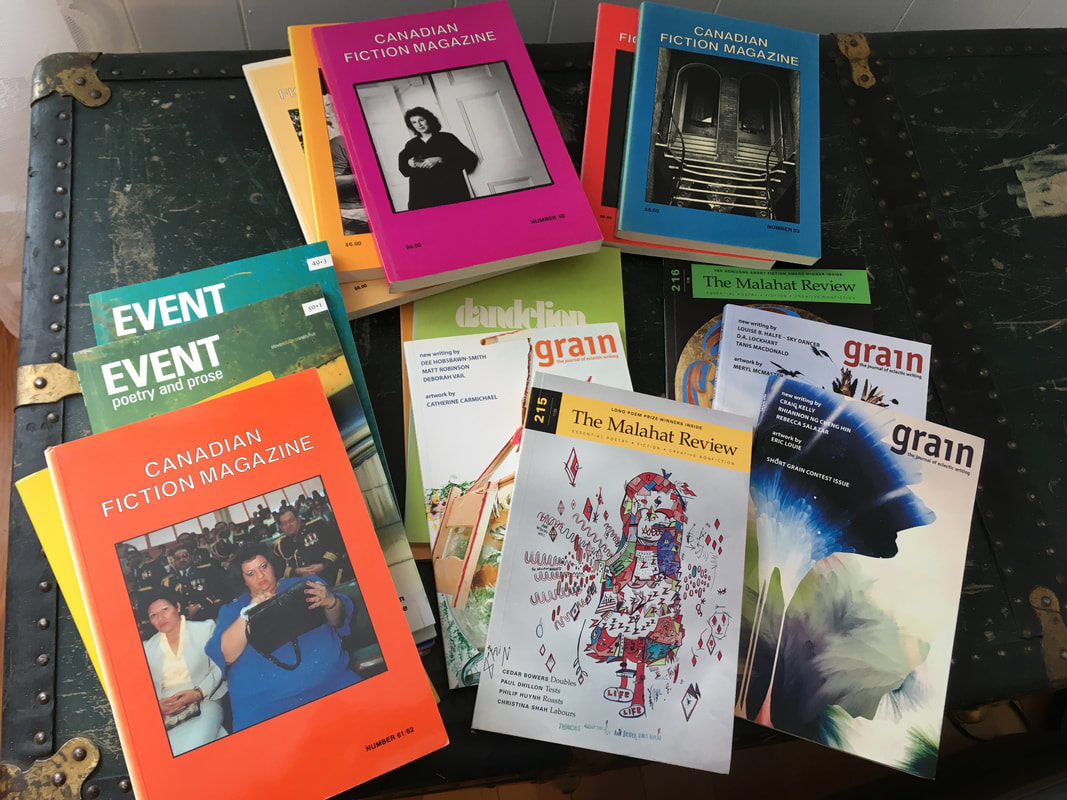|
http://www.jonimacfarlane.com/blog
A few weeks ago CNN, of all places, had an article on a depressing trend: the death of literary magazines. It’s not only independent lit mags that are disappearing, but so are university-funded magazines. On the one hand, it makes sense that lit mags—which virtually never make money—are on the chopping block. But it’s also a bit strange or at least sad that universities would drop one of the most essential arts of the creative writing world. Literary magazines are the testing grounds for writers (and editors), the place where emerging authors first learn the pain of rejection and pride of publication. A place for editors to hone their aesthetics and writers to experiment with their work. They are feeder for anthologies, agents, publishers, and more. The first time I remember reading a literary magazine was in university. As English lit students, most of us dreamed of lives as writers. When I mentioned I was getting interested in creative writing, one of my profs recommended Canadian Fiction Magazine. It was issue #58, and featured a young Margaret Atwood on the cover and an interview just after the release of her wildly successful novel, A Handmaid’s Tale. Inside there was a section of literary portraits featuring such luminaries as Tennessee Williams, Arthur Miller, Roberston Davies, Ray Bradbury, and Edna O’Brien. The issue featured many previously unpublished writers, and some whose names were vaguely familiar. More than the stories themselves, the entire issue had a sense of literary fun and formal experience. It was a world, whose access seemed unfathomable, insurmountable to me. Since then, the literary magazine has evolved into a rare and beautiful thing, especially in Canada. Grain, The Antigonish Review, Dreamers, The Fiddlehead, and The Malahat Review are just some of the sleek and elegant lit mags featuring art, poetry, photography, flash fiction and short fiction. They publish many strange and wonderful stories with sharp and edge-of-your-seat writing and are brilliantly edited and designed. They show the joy and power of aesthetic-driven magazines as well as also the sheer pleasure of reading a range of styles and authors working within that vision. Today, I am a voracious lit mag reader. I love the way literary magazines force one to read different authors and styles side-by-side, revealing new connections between works and revealing themes and ideas in a way that rarely happens in single-author collections. Literary magazines aren’t mere stepping stones of course, but they are a testing ground. A place where we writers get to see how our work will be received outside of friends, family members, or workshops where people feel obligated to read and respond. They’re also a place to experiment and push ourselves in new directions, to experiment with literary styles that are usually ignored by major publishers. Basically, literary magazines serve a vital function even if many—yes, most—of them have minimal readership. A literary world without any magazines would figure out ways to adjust. But it would be a poorer place. If you are interested in reading a broad spectrum of writing within a few pages, paired with exquisite poetry, fiction, and art, often the work of new voices, then consider subscribing to a literary magazine. There are literary pleasures inside you might not find anywhere else. In the meantime, happy reading! Joni
0 Comments
Leave a Reply. |
Archives
July 2024
Categories |

 RSS Feed
RSS Feed
